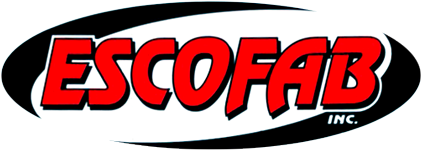What Is Aluminum Welding?
Aluminum welding refers to the process of fusing two pieces of aluminum. However, several factors make the aluminum welding process challenging. These factors include:
- Oxidation: Aluminum sits on an oxide layer that has a higher melting point. Therefore, welders have to use very high heat while being careful not to insert holes in the aluminum inside.
- Sensitivity: Aluminum is susceptible to contamination by dirt and elements during the welding process.
- Porousness: Aluminum absorbs hydrogen in its molten state. As it cools and returns to its solid form, hydrogen separates, creating bubbles and causing the aluminum to be weak and porous.
When the proper precautions are taken, welding aluminum can be pretty easy. However, you must first select the proper method of welding.
What Are Ways to Properly Weld Aluminum?
There are four primary types used on aluminum. They include:
GMAW/MIG
Gas Metal Arc Welding (GMAW) or Metal Inert Gas (MIG) is one of the best aluminum welding methods. It uses a wire-feeding welding technique. In this method, a push-pull or spool gun is used to help feed the aluminum wire for welding. However, it is essential to note that 100% CO2, 75% argon gas, and 25% CO2 shielding gas are unsuitable for aluminum. These gases may be suitable for steel, but CO2 is too reactive for aluminum. Thus, you need to seek an expert’s advice on the best shielding gas before starting the aluminum welding process.
Beam Welding
Laser beam and electron beam welding are also suitable for aluminum welding. Electron beam welding does not use light as a primary energy source; hence, there are a few difficulties associated with it. Instead, it is done in a vacuum. On the other hand, laser beam welding has multiple challenges, including light reflectivity and high porosity.
GTAW/TIG
Gas Tungsten Arc Welding (GTAW) or Tungsten Inert Gas (TIG) is applied to all aluminum grades. Unlike GMAW/TIG, this process does not use mechanical wire feeding. Instead, GTAW/TIG involves the welder manually packing the filler metals into the puddle. This method is beneficial as it prevents aluminum contamination.
Resistance Welding
Although it’s not the most popular aluminum welding method, resistance welding is an option. Many issues may arise due to the metal’s electrical and thermal conductivity problems. Thus, expansion time and resistance welding equipment are necessary when using this technique.
If you are looking for the right equipment to achieve neat welds, do not hesitate to contact Escofab Inc. We are experts in aluminum welding. Our extensive experience and capabilities extend to all types of metals, including aluminum. Our team of experts is highly skilled and understands the right processes and machinery for aluminum welding. Call us today at (251) 368-1261 for expert aluminum welding machinery. Satisfaction for your project is guaranteed!
